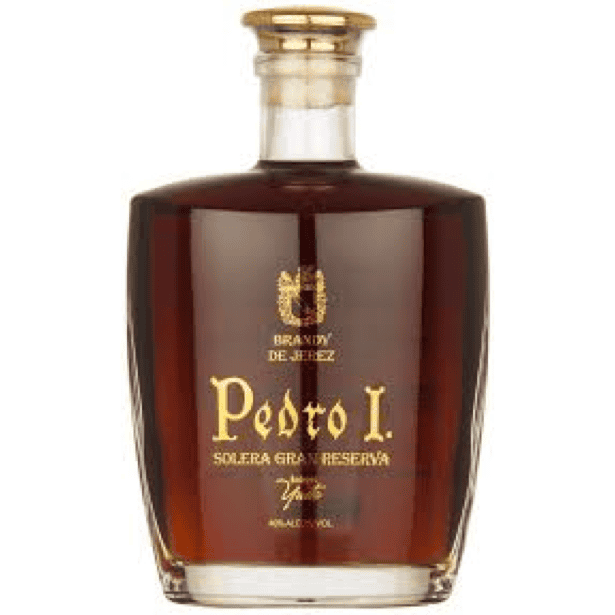
Bodegas Yuste Pedro I Solera Gran Reserva Brandy de Jerez
Since 1991, Sanlúcar de Barrameda almacenista Francisco (Paco) Yuste has pursued the objective of producing Manzanilla up to its highest historic standards. Upon rescue and restoration of venerable, endangered soleras and bodegas in Sanlúcar’s emblematic Barrio Alto and Barrio Bajo districts, classic Manzanillas and Sherries are produced.
Sanlúcar native Francisco (Paco) Yuste has sold Manzanilla his entire life, building a successful beverage distributorship in the provinces of Cádiz and Córdoba. In 1991 he purchased historic Bodega Santa Ana in Sanlúcar’s Barrio Bajo, including its centenerian solera, and began operation as an almacenista. In 2001 he added Bodega Los Ángeles in the Barrio Alto, restoring it to Manzanilla production and for refreshing his criaderas at Santa Ana. Bodega Miraflores, founded in 1956 by a group of growers in that famous Sanlúcar pago, was acquired in 2010 to serve as production base.
Yuste quality starts in the vineyard with the fabulous 46-hectare Viña La Alamedilla estate in the Jerez pago of Carrascal. Longterm sources in El Puerto de Santa María’s Balbaína and Sanlúcar’s Miraflores contribute in equal parts to combine freshness and minerality with ample body.
New wines arrive to Bodega Miraflores. Just 800 meters from the Guadalquivir estuary, Miraflores offers ideal conditions for sobretablas selection and the first stages of Manzanilla development. After five years, the manzanilla fina passes to Bodega Los Ángeles for aging as Aurora Manzanilla before entering the solera at Bodega Santa Ana in the Barrio Bajo where La Kika (Manzanilla Pasada en Rama, well over 10 years old: “The Pearl of Sanlúcar”) is bottled by hand from selected individual botas.
In 2015 Yuste’s acquisition of the classic Aurora brand provided impetus for export launch. This was followed in 2016 by purchase of Herederos de Argüeso with its famous Manzanilla, San León.
Yuste’s treasures include the 18th Century soleras of the Conde de Aldama, who preserved his prephylloxeric wines by encasing the botas in plaster, preventing their admixture with wines from grafted vines during approximately 50 years.

Explore a World of Spirits and Liquor through our Comprehensive FAQ Section.
Discover a World of Spirits and Liquor in our Helpful FAQ Section.
Types of Spirits
- Whiskey: Made from fermented grain mash and aged in wooden casks.
- Vodka: Typically distilled from grains or potatoes and known for its clear, neutral flavor.
- Rum: Produced from sugarcane byproducts like molasses or sugarcane juice.
- Tequila: Made from the blue agave plant, primarily in the area surrounding Tequila, Mexico.
- Gin: Distilled with botanicals, primarily juniper berries, giving it a distinctive flavor.
Production Process
- Fermentation: The process where yeast converts sugars into alcohol.
- Distillation: Separating alcohol from the fermented mixture to increase its concentration.
- Aging: Storing spirits in barrels to develop flavors over time.
Tasting and Pairing
- Tasting Notes: Learn to identify different aromas, flavors, and textures.
- Food Pairings: Discover which spirits complement various dishes, enhancing the dining experience.
Cocktails and Mixology
- Classic Cocktails: Recipes and techniques for making popular drinks like the Old Fashioned, Martini, and Mojito.
- Mixology Tips: How to balance flavors and create your own cocktail recipes.
History and Culture
Origins: The historical background of different spirits.
Cultural Significance: How spirits are enjoyed and celebrated around the world.

